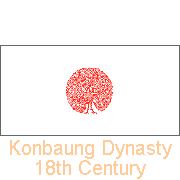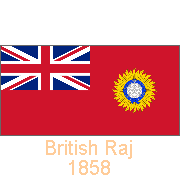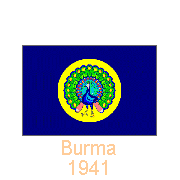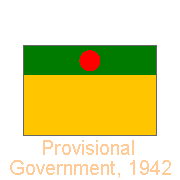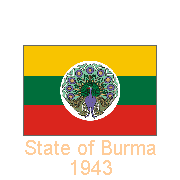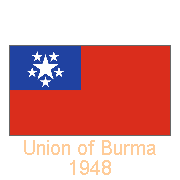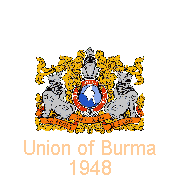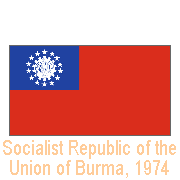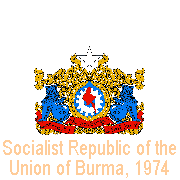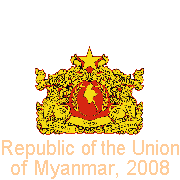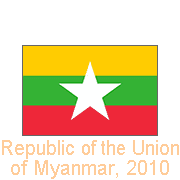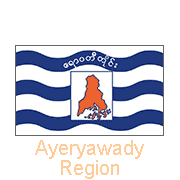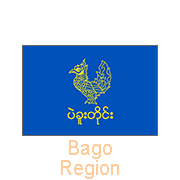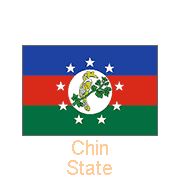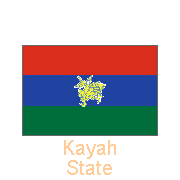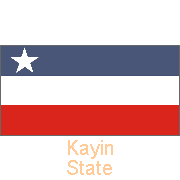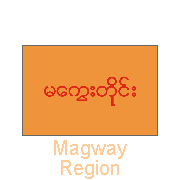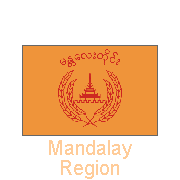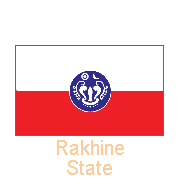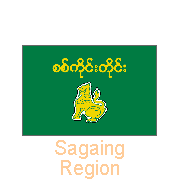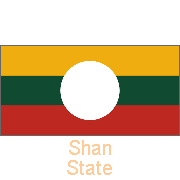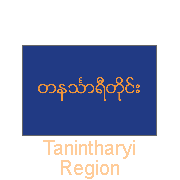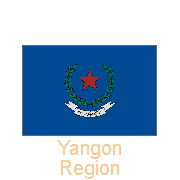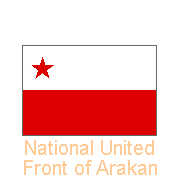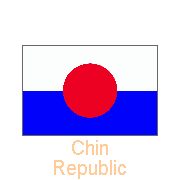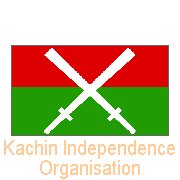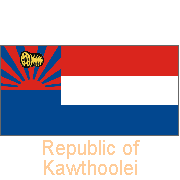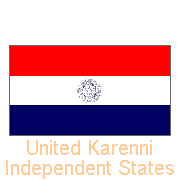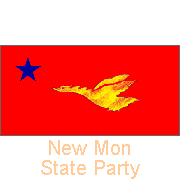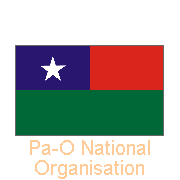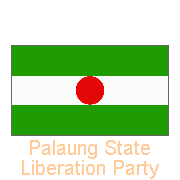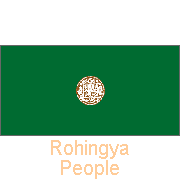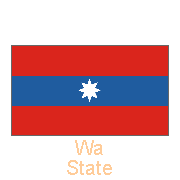Flags from Myanmar
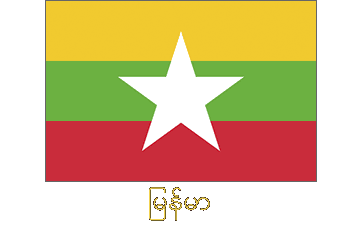
Flag History, Regional flags and Aspirant peoples of Myanmar
King Alaungpaya (1714-1760) started the Konbaung dynasty, the last royal dynasty to rule Burma until the British conquest. His emblem was the peacock, which remained a symbol of Myanmar, right until independence. Different colours and designs have been mentioned, but most common probably was that of a peacock on a red disk or outlined in red.
you may then send it as a postcard if you wish.
Following the Second Anglo-Burmese war in 1852, Britain annexed the whole of Lower Burma and effectively became part of British India. In 1858 the rule of the British East India Company was transferred to the Crown in the person of Queen Victoria (who would become Empress of India in 1876), a system of governance referred to as the British Raj. In 1858 Lower Burma was already a part of British India and, after the Third Anglo-Burmese War, Upper Burma was added in 1886. The resulting union, Burma, was administered as a province until 1937. Its flag was the British ensign with the "Star of India", a combination of a sun and a star and a garter with the motto Heaven's Light Our Guide", chosen as being acceptable to all religious groups in India. Burma was separated from British India and became a separate colony on 1 April 1937. A new flag became official on 9 February 1939. It was a British Blue Ensign with on the fly, on a golden disk, a dancing peacock in natural colours, the emblem of the last Royal dynasty, that ended in 1885. The design was in fact taken from the 1-kyat silver coin as had been used in the time of King Mindon Min. On 30 March 1941 a new flag was adopted in which the emblem was placed on a blue field, with the Union Jack removed, reflecting the growing anti-British sentiments of the people, who were hoping for independence in view of an imminent invasion by Japanese troops later that year.
Japanese troops invaded Burma in 1941 and in their wake followed the Burmese National Army, the armed wing of the Burmese Independence Party that was formed in Japan in 1940. Although many Burmese initially fought with the Japanese against the British, some, mostly from ethnic minorities, fought with the British. The flag displayed during occupation was the Japanese flag. Ba Maw, the head of the Sinyetha party, became the head of a puppet government, while Aung San, who ruled the Society of the Thakins, was appointed chief of the "National" Burmese army. The provisional pro-Japan government in 1942 adopted the flag of the Synyethe - Wunthann party as the unofficial national flag (yellow, a green stripe atop, charged with a red rising sun). On 1 August 1943 the State of Burma was declared by the Japanese, in name an independent country but in reality a Japanese puppet state with as Head of State was Ba Maw. The flag, adopted on 1 August 1943, was a yellow-green-red triband with a peacock on a white disk. The colour yellow stood for the Buddhist faith, green for agriculture and red for bravery. Variants of this flag, with the peacock on a red disk, have also been reported. The flag was abolished on 1 August 1945; by that time the Burmese National Army had switched sides, when it was clear the Japanese had lost.
During the war there had been an anti-Japanese movement in Burma, the Anti-Fascist Resistance Movement, fighting under a red flag with a white star in the upper hoist. This flag may have been the inspiration for the flag that was adopted at independence. On 4 January 1948 the Union of Burma became an independent republic, combining Upper- and Lower Burma with the Frontier Areas, that had been administered separately: the Shan States, Chin Hills and Kachin tracts, inhabited by ethnic minorities. Its flag was red with a blue canton containing one large white star, symbolising the Union and five small white stars around it, standing for the five main ethnic groups: Burmese, Shans, Karens, Chins, and Kachins. The white colour symbolised honesty. In 1974 a new constitution proclaimed the "Socialist Republic of the Union of Burma". The new flag was adopted on 27 December 1973, symbolising the "Burmese Road to Socialism" and displayed in the blue canton a cog wheel and a paddy ear, symbolising industry and agriculture, surrounded with 14 five-pointed stars, one for each State and Division. It was stated that the colour red signified courage and decisiveness, white signified purity and virtue and dark blue signified peace and integrity. On 10 May 2008 a constitutional referendum was held and the country's name changed to "Republic of the Union of Myanmar". After general elections a new state flag was adopted on 21 October 2010. The design, echoing previous designs, has three horizontal stripes of yellow, green and red with a five-pointed white star in the centre. The three colours of the stripes are meant to symbolise solidarity, peace and tranquility, and courage and decisiveness. The State seal of Myanmar is similar in design to previous emblems. Framing and protecting the central emblem are two "chinthe", mythological lions, incarnating ancient wisdom, bravery and strength. An outline map of Myanmar appears in the centre and the official name of the country is inscribed on a scroll below. A five pointed star appears at the top.
Myanmar's seven States and seven Regions all have their own flags, flown in conjunction with the National flag. As a result of the many ethnic conflicts in the country, most ethnic groups have their liberation movements and armies and have been fighting the central government forces on and off since independence; the Panglong Agreement, in which ethnic groups could determine their own future, was never implemented. As an example, the Karen people, although having their own Kayin State, have always strived for an independent homeland, Kawthoolei, "The Green Land" (or. alternatively, "The Land Burnt Black", i.e. the land that must be fought for); although independence has not been granted, the flag of the Karen National Union can be seen prominently displayed during celebrations like Karen New Year.


